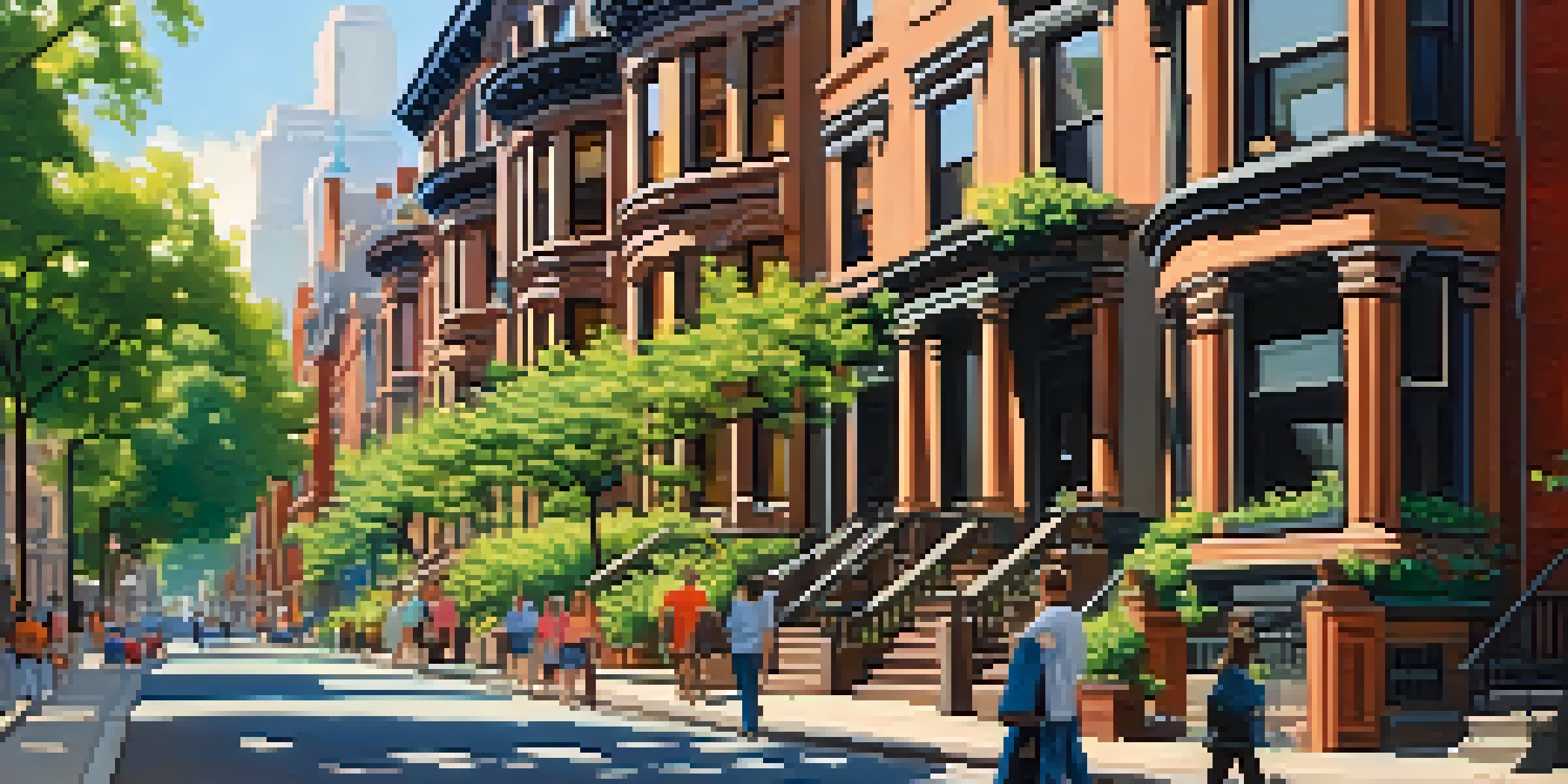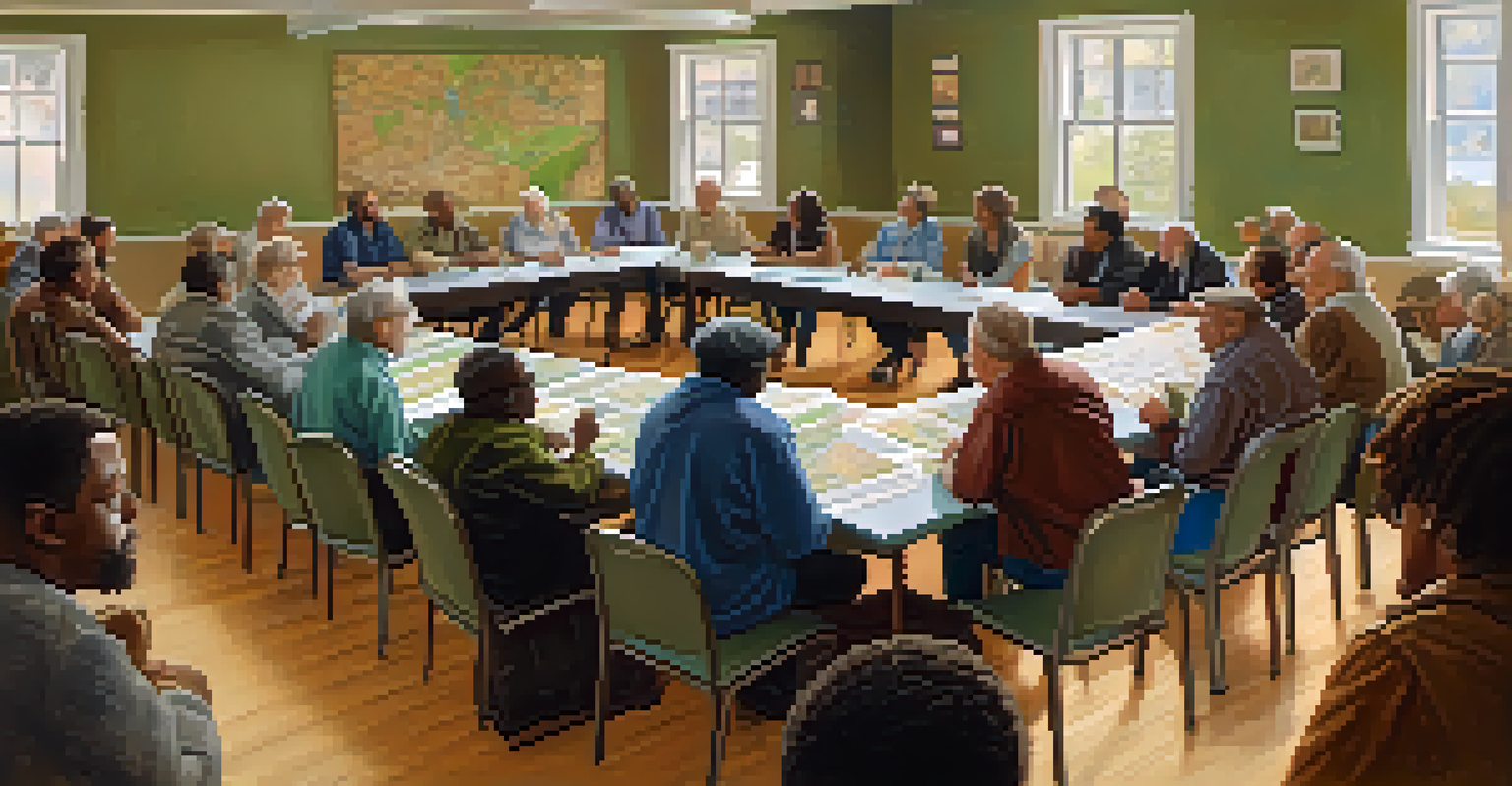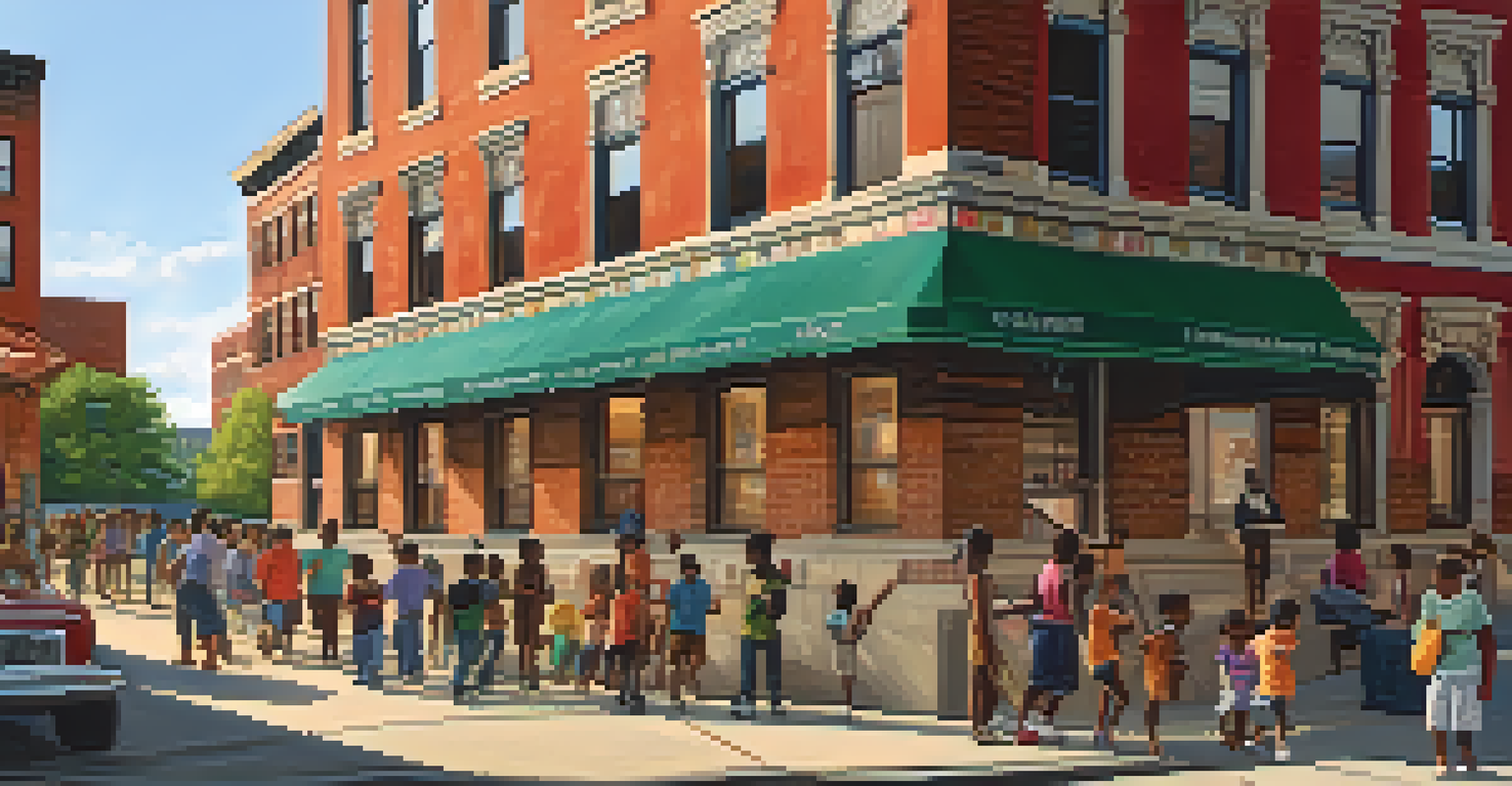The Role of Community in NYC's Historic Preservation Efforts

Understanding Historic Preservation in NYC
Historic preservation in New York City is all about protecting the unique character and heritage of its neighborhoods. This effort involves safeguarding buildings, sites, and districts that have historical, cultural, or architectural significance. By preserving these elements, we not only maintain the city's identity but also celebrate its rich narrative, which is woven into the fabric of urban life.
Preservation is not just about saving buildings; it’s about preserving the stories that shape our communities.
New York City boasts a diverse array of architectural styles and historical landmarks, each telling a story of the city's evolution. From the iconic brownstones of Brooklyn to the Art Deco skyscrapers of Manhattan, these structures are more than just buildings; they are a testament to the city's past and a bridge to its future. Understanding this context is crucial for appreciating the ongoing preservation efforts.
The role of the community in these preservation initiatives cannot be overstated. Residents, local organizations, and advocacy groups play a pivotal role in identifying what should be preserved and making their voices heard in the decision-making process. This grassroots involvement ensures that diverse perspectives are considered, making preservation a truly collective endeavor.
Grassroots Movements: The Power of Local Voices
Grassroots movements have been at the forefront of many successful historic preservation efforts in NYC. These movements often begin with a small group of passionate individuals who recognize the value of a particular building or neighborhood. Through community meetings, social media campaigns, and petitions, they can rally support and raise awareness about the importance of preserving local history.

One notable example is the fight to save the historic Bowery Ballroom from being replaced by a luxury condo development. Community activists banded together, sharing stories about the venue's significance to New York's music scene. Their concerted effort not only saved the ballroom but also highlighted the influence of community action in preserving cultural landmarks.
Community Drives Preservation Efforts
Grassroots movements and local organizations play a vital role in advocating for historic preservation in NYC.
Such grassroots initiatives remind us that preservation isn't just about the structures themselves; it's about the stories, memories, and connections that people have with these places. When communities unite with a common purpose, they can effectively advocate for policies that protect their heritage while enhancing their neighborhoods.
The Role of Local Organizations in Preservation
Local organizations play a crucial role in historic preservation by providing resources, expertise, and a platform for community engagement. Groups like the Historic Districts Council and Landmark West! work tirelessly to educate the public on the importance of preserving New York's architectural heritage. They often conduct workshops, tours, and advocacy campaigns that empower residents to take action.
The past is a place we can learn from, not a place to be forgotten.
These organizations not only advocate for specific buildings but also foster a broader understanding of what historic preservation means. They help residents recognize the significance of their neighborhoods and encourage them to participate in local preservation efforts. By building a sense of community ownership, these organizations strengthen the fabric of urban life.
Moreover, these groups often collaborate with local government and other stakeholders to develop preservation policies that reflect the community's needs. This partnership ensures that preservation efforts are not top-down mandates but rather collaborative processes that respect local voices and priorities.
Community Engagement Through Education and Advocacy
Education is a cornerstone of community engagement in historic preservation. Local organizations often host educational programs that teach residents about the history of their neighborhoods and the significance of the buildings within them. These initiatives help create informed citizens who appreciate the value of preserving their surroundings.
Advocacy training programs are also essential, equipping residents with the skills to effectively voice their concerns and influence preservation policies. By learning how to navigate the legislative process, community members can advocate for their interests more effectively, ensuring their concerns are heard in city planning discussions.
Education Fosters Local Stewardship
Educational programs empower residents to appreciate their neighborhood's history and actively participate in preservation.
This engagement fosters a sense of stewardship, where residents feel responsible for the care and preservation of their neighborhoods. When people understand their community's history, they are more likely to take action to protect it, creating a cycle of engagement that sustains preservation efforts over time.
Challenges Faced by Communities in Preservation Efforts
Despite the passionate involvement of communities, historic preservation in NYC is fraught with challenges. One significant hurdle is the pressure of development, as rising property values often lead to conflicts between new construction and preservation efforts. This tension can create divisions within communities, as some residents may prioritize economic growth over preserving historical sites.
Moreover, not all neighborhoods have equal access to preservation resources or support. Communities in lower-income areas may struggle to organize or advocate effectively, leaving their historic sites vulnerable to neglect or demolition. This disparity highlights the need for more inclusive approaches to preservation that elevate the voices of underrepresented communities.
Addressing these challenges requires collaboration between community members, local organizations, and city officials. By creating equitable platforms for dialogue and ensuring that all voices are heard, preservation efforts can be more effective and reflective of the diverse tapestry that makes up New York City.
Case Studies: Successful Community-Led Preservation
Examining successful community-led preservation efforts provides valuable insights into effective strategies. For instance, the preservation of the Tenement Museum on the Lower East Side was driven by passionate local advocates who recognized the site's cultural significance. Their efforts not only saved the building but also transformed it into an educational resource that tells the stories of immigrant families in NYC.
Another inspiring case is the ongoing revitalization of the historic South Bronx. Community members have come together to restore abandoned buildings and create public spaces that celebrate the area's rich cultural heritage. This grassroots movement has fostered a sense of pride and ownership among residents, showcasing the power of collective action in preservation.
Challenges to Preservation Persist
Economic pressures and unequal access to resources create significant hurdles for some communities in their preservation efforts.
These case studies illustrate that community-led initiatives can lead to meaningful change. When residents band together, they can effectively advocate for their neighborhoods, ensuring that the history and culture of their areas are preserved for future generations.
Looking Ahead: The Future of Preservation in NYC
As New York City continues to evolve, the future of historic preservation will largely depend on community involvement. Engaging younger generations and fostering a passion for local history will be crucial in sustaining these efforts. By incorporating preservation education into school curriculums and community programs, we can inspire the next wave of advocates.
Additionally, leveraging technology can enhance community engagement in preservation. Virtual tours, social media campaigns, and online resources can help connect residents with their neighborhoods' history, making preservation more accessible and appealing. This digital approach can spark interest and encourage participation among a broader audience.

Ultimately, the future of historic preservation in NYC hinges on a collaborative spirit, where communities, local organizations, and city officials work together to protect the past while embracing the future. By fostering a culture of stewardship, we can ensure that the rich history of New York City continues to thrive amidst its ever-changing landscape.